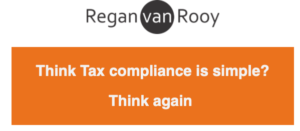SARS issues new guide to understatement penalties – a march toward further certainty?
The Tax Administration Act, No 28 of 2011 (TAA) was promulgated with effect from 1 October 2012. The rationale behind the introduction of the TAA was that it would streamline, modernise and align the previous tax administration provisions to ultimately lower the cost and burden of tax administration in South Africa. One of the key changes to the tax administration regime in South Africa pursuant to the promulgation of the TAA was the conversion from the imposition of “additional tax” by SARS to the understatement penalty regime.
In terms of the now-repealed s76 of the Income Tax Act, No 58 of 1962 (Act), SARS could previously impose additional tax up to 200{780f53c297e2c008074d23b865a0ce0b35a4f08852d8e1e49466a5a902c4e44e} in the event of a default or omission by the taxpayer. Several issues were encountered in respect of the erstwhile additional tax regime including the fact that there was a lack of certainty, uniformity and transparency in SARS’s application of the relevant provisions. For instance, it was often difficult to ensure that taxpayers in comparable circumstances were treated consistently. Furthermore, the way the provision was constructed had the effect that SARS would often commence imposing the maximum additional tax of 200{780f53c297e2c008074d23b865a0ce0b35a4f08852d8e1e49466a5a902c4e44e} and only to the extent that the taxpayer could prove extenuating circumstances, would SARS consider reducing the penalty.
The Memorandum on the Objects of the Tax Administration Bill, 2011 expanded upon the rationale for the relinquishment of the additional tax regime for two further reasons:
- It would remove any uncertainty as to whether additional tax was a tax that may only be imposed under a money bill as contemplated in s77 of the Constitution; and
- South African courts have held on more than one occasion that additional tax was a penalty, and not a tax on, for example, income as the name suggested.
The new understatement penalty regime was thus introduced with effect from 1 October 2012. Without undertaking a detailed analysis of how the provisions work, it is nevertheless worth noting that it is now based on certain objective categories of behaviour. In other words, the understatement penalty percentage imposed is dependent on the behaviour of the taxpayer, which categories include the following:
- substantial understatement;
- reasonable care not taken in completing the return;
- no reasonable grounds for tax position taken;
- impermissible avoidance arrangement;
- gross negligence;
- intentional tax evasion.
Importantly, the onus to prove the grounds for imposition of an understatement penalty and the applicable percentage is on SARS.
While the conversion from the additional tax regime to the understatement penalty regime was welcomed, particularly given the fact that it is now based on certain objective criteria, the challenge is that behaviours listed in the understatement penalty percentage table are not specifically defined in the TAA. One therefore has to rely on other legislative interpretive tools in order to define the specific behaviours. While there have already been some cases dealing with the understatement penalty regime, South African judicial precedent will still take time to fully develop this aspect of tax law.
Nevertheless, one could obtain guidance from other sources such as case law pertaining to the now-repealed additional tax regime, South African criminal case law defining some concepts (which is nevertheless not a perfect substitute) as well as guidance and judicial precedent from other jurisdictions with very similar regimes such as Australia and New Zealand.
While the objective criteria and shift towards greater certainty is welcomed, a key challenge nevertheless remains given that the criteria are open to differing interpretations. At the time the TAA was introduced it was understood that SARS would ultimately provide guidance as to its interpretation of the different behaviours. SARS finally published its Guide to Understatement Penalties (Guide) on 28 March 2018, albeit several years after the promulgation of the TAA.
The Guide is fairly extensive and provides insight and examples regarding several contentious issues underpinning the new understatement penalty regime including, among others, the following key issues:
- what triggers an “understatement”;
- how to calculate an understatement penalty based on the shortfall of tax; and
- what constitutes a bona fide inadvertent error (the subject of much consternation).
Importantly, the Guide also discusses and provides examples of each of the listed behaviours.
While the Guide will certainly shed some light on SARS’s interpretation of the relevant provisions and will no doubt prove useful to taxpayers, it should be appreciated that the Guide is not binding and is merely of persuasive value. Taxpayers would thus be well advised to keep this in mind when faced with this ever-increasing contentious aspect of tax law.






